Reviews: Read What Others Are Saying: page 42
215 ★★★★★ reviews
148 ★★★★★ reviews
91 ★★★★★ reviews
134 ★★★★★ reviews
Thought of Card at Thought of Number
Overall customer rating: ★★★★★reviewed by Michael Cook (confirmed purchase)
Rating: ★★★★★ (Date Added: Monday 17 August, 2020)
 Was looking for a good simple ACAAN. I thought maybe this would be good. Nothing really good about it. To much dealing and counting. It’s just too confusing. Way to much procedure. Not recommended. There are better ACAANs out there this isn’t one of them. The Untouchables by the same author is the same convoluted ACAAN.
Was looking for a good simple ACAAN. I thought maybe this would be good. Nothing really good about it. To much dealing and counting. It’s just too confusing. Way to much procedure. Not recommended. There are better ACAANs out there this isn’t one of them. The Untouchables by the same author is the same convoluted ACAAN.
Stark Horizon
Overall customer rating: ★★★★★reviewed by D L
Rating: ★★★★★ (Date Added: Friday 14 August, 2020)
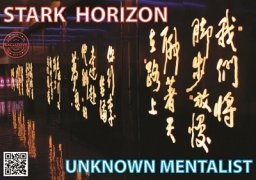 Usually you get better info on how the effect my fit you in performance from the reviews that are critical of the effect. An all glorious review do not help that much...
Usually you get better info on how the effect my fit you in performance from the reviews that are critical of the effect. An all glorious review do not help that much...
Flick: coin into bottle
Overall customer rating: ★★★★★reviewed by Bernardino Diza (confirmed purchase)
Rating: ★★★★★ (Date Added: Thursday 13 August, 2020)
 The trick looked real good, so I bought it. The explanation sucks, it show's you how to use one of the coins and thread to make one gimmick period. So how are the tape and magnet used. What's the setup of this trick? It doesn't show or say anything else. What the Hell, this was waste of $15.00.
The trick looked real good, so I bought it. The explanation sucks, it show's you how to use one of the coins and thread to make one gimmick period. So how are the tape and magnet used. What's the setup of this trick? It doesn't show or say anything else. What the Hell, this was waste of $15.00.
35 Miracles with a Mirror Glass
Overall customer rating: ★★★★★reviewed by David Nethery (confirmed purchase)
Rating: ★★★★★ (Date Added: Thursday 13 August, 2020)
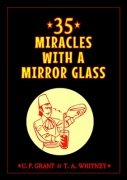 This is a useful reference book on various uses for this classic prop. I would recommend it.
This is a useful reference book on various uses for this classic prop. I would recommend it.
Something that would improve this e-book would be to update it with recommended sources to purchase a good well-made tumbler or goblet that has been gimmicked in this way. Sadly, there are many cheap, poorly made versions available, but not many good ones. Most of the models currently available are not very deceptive looking; these cheap versions use a plastic glass and a piece of polished metal (a highly polished piece of stainless steel can be very effective, but many of the cheaper glasses on the market don't use highly polished stainless steel.) One of the common mistakes made in these type of glasses (both older models and current models) is to have the edge of the gimmick extend to the very top edge of the tumbler. This makes it too likely that the edge will flash at some point without very careful handling. The best versions are made in such a way that the top edge of the gimmick is lower than the edge of the glass. Some types of acrylic or lucite tumblers or goblets are appropriate for making this prop, but it's hard to beat the use of a heavy, fluted real glass for disguising the presence of the gimmick. Even if some good versions of this prop could be recommended for purchase, magic props tend to come and go - example: a few years ago there was an excellent version made by Steve Dick called the "Diamond Cut M***** Goblet" , but this has been discontinued and is hard to find - so perhaps another valuable way to update this e-book would be to include instructions on how to make your own, with suggestions for appropriate types of heavy fluted glasses or glasses with a "diamond" or "waffle" cut pattern that could be used (antique markets or websites dealing in antique glassware are a good source), also the right kind of material that can be used to make the gimmick. Many of the effects with this kind of glass use a gimmick that is removable, but it would also be useful to provide instruction on how to permanently mount the gimmick with the right kind of clear-drying waterproof adhesive for effects that involve the use of liquid. Some of this may be covered (?) in the e-book Magician's DIY Tips and Tricks by Chris Wasshuber also available here on Lybrary.com, which I don't own (yet), but if not then a section on how to make this sort of prop might be a worth addition to 'Magician's DIY Tips and Tricks' as well.
Linxed
Overall customer rating: ★★★★★reviewed by Kyoko Sato (confirmed purchase)
Rating: ★★★★★ (Date Added: Friday 07 August, 2020)
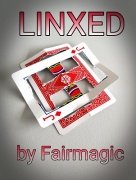 Attention. This is "Magic" and not "Impossible Object" or "Impossible folding". I want to know how to make impossible objects so this is not what I wanted. But if you like this kind of magic. It's OK and as you know, the price is not expensive. (Sorry my English is broken.)
Attention. This is "Magic" and not "Impossible Object" or "Impossible folding". I want to know how to make impossible objects so this is not what I wanted. But if you like this kind of magic. It's OK and as you know, the price is not expensive. (Sorry my English is broken.)
Quantum Reality
Overall customer rating: ★★★★★reviewed by Enrico Varella
Rating: ★★★★★ (Date Added: Monday 03 August, 2020)
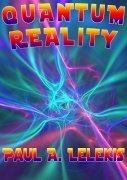 [I am a colleague of Paul and received this ebook free of charge.]
[I am a colleague of Paul and received this ebook free of charge.]
If you are new to the work of Paul Lelekis, I assure you that you will invest in a spectrum of routines tried-and-tested and relevant for your audiences. Quantum Reality, follows on the enthusiastic wavelength of Lelekis's previous written library of over-50 books (which is enormously impressive and prolific even for a magic author). Admittedly, I read his book in 'packets': I started with his Introduction Essay, the table of contents, and then the 8 Brain-Fryers (I got a good buzz) at the conclusion. Thereafter, I read and played with the effects present in random order. Like the concepts in quantum mechanics, Lelekis made the mechanics of card sleight-of-hand and magic principles within achievable reach (his instructional videos are illuminatingly clear), and by presenting any of his energetic pieces of strange - you may make a quantum leap in your audience impact and interaction!
13 Steps to Mind Maintenance for Magicians and Mentalists
Overall customer rating: ★★★★★reviewed by James Perry (confirmed purchase)
Rating: ★★★★★ (Date Added: Sunday 02 August, 2020)
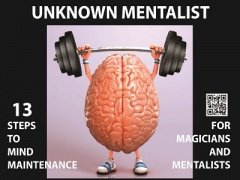 I have been a fan of the Unknown Mentalist for some time now. The several effects I have purchased from this person have all been fantastic. This free gift being offered will help anyone new to mentalism get started on the right foot. It's a great introduction to what the Unknown Mentalist has to offer.
I have been a fan of the Unknown Mentalist for some time now. The several effects I have purchased from this person have all been fantastic. This free gift being offered will help anyone new to mentalism get started on the right foot. It's a great introduction to what the Unknown Mentalist has to offer.
Mind Spark 6: Audio Peek
Overall customer rating: ★★★★★reviewed by Fred Rosenbaum (confirmed purchase)
Rating: ★★★★★ (Date Added: Wednesday 29 July, 2020)
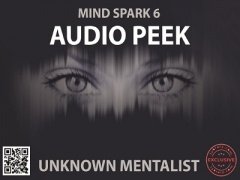 This is an effect for the working pro, not something you’ll fool the boys at the club with. You need to be in communication with your client (or train your assistant) and it doesn’t always work (TUM claims 75% but that seems high to me) but when it does you have a miracle.
This is an effect for the working pro, not something you’ll fool the boys at the club with. You need to be in communication with your client (or train your assistant) and it doesn’t always work (TUM claims 75% but that seems high to me) but when it does you have a miracle.
When I was working at a video game company I accidentally used this method and ended up saving the company several millions of dollars so I know it works sometimes and when it does it can be priceless. For the current price of free or even the regular $6 price for the right person it is worth it.
Zodiac Oracle
Overall customer rating: ★★★★★reviewed by David Burmeister (confirmed purchase)
Rating: ★★★★★ (Date Added: Saturday 25 July, 2020)
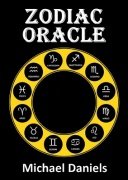 This is another great effect from Michael Daniels. You can use it on the phone because of covid and I don't believe that it would be that difficult to memorize the effect If you are interested in revealing a person their Zodiac sign AND AGE! One thing for sure, the spectator will be amazed!!! Well done Michael Daniels!
This is another great effect from Michael Daniels. You can use it on the phone because of covid and I don't believe that it would be that difficult to memorize the effect If you are interested in revealing a person their Zodiac sign AND AGE! One thing for sure, the spectator will be amazed!!! Well done Michael Daniels!
Propless Tarot
Overall customer rating: ★★★★★reviewed by David Burmeister (confirmed purchase)
Rating: ★★★★★ (Date Added: Saturday 25 July, 2020)
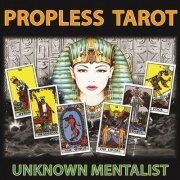 This is another winner by the UNKNOWN MENTALIST, at least to me anyway. With the COVID virus here this will be a great effect to do by phone or maintaining a space between you and the spectator. I believe it will also sound quite believable to the average layperson. Well done UNKNOWN MENTALIST.
This is another winner by the UNKNOWN MENTALIST, at least to me anyway. With the COVID virus here this will be a great effect to do by phone or maintaining a space between you and the spectator. I believe it will also sound quite believable to the average layperson. Well done UNKNOWN MENTALIST.
Kalendeck
Overall customer rating: ★★★★★reviewed by David Burmeister (confirmed purchase)
Rating: ★★★★★ (Date Added: Saturday 25 July, 2020)
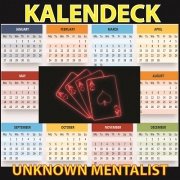 This is another GREAT deck stack that belongs in every mentalists collection. I don't know how the UNKNOWN MENTALIST has a gift to come up with these stacked decks but it's a steal at the price. I recommend it very highly. Well done UNKNOWN MENTALIST!
This is another GREAT deck stack that belongs in every mentalists collection. I don't know how the UNKNOWN MENTALIST has a gift to come up with these stacked decks but it's a steal at the price. I recommend it very highly. Well done UNKNOWN MENTALIST!
Quantum Reality
Overall customer rating: ★★★★★reviewed by Rick Carruth
Rating: ★★★★★ (Date Added: Monday 20 July, 2020)
 [I have received a review copy of Paul's ebook. Here is my review.]
[I have received a review copy of Paul's ebook. Here is my review.]
Quantum Reality is Paul A. Lelekis' latest ebook. Paul has taken full advantage of this Covid mess and utilized his time well. Most of Paul's ebooks are in the twenty to thirty page length .. but THIS one is over sixty pages and includes 14 effects and a couple of valuable 'lessons'.
Paul is a simmering pool of magic knowledge, having spent many years as a professional performer. He has worked tables for thousands upon thousands of customers and righly deserves a platform to talk about what's inportant .. and what to avoid.. at the table. Not everything is strictly close-up or walk around magic. Some can be performed for small crowds in a parlour setting, depending on your situation.
I'll tell you straight up.. I consider this ebook to be for the advanced beginner to intermediate performer. It's not for the beginner. Although Paul is well known for writing effects for every level of performer, he has put considerable thought into QUANTUM REALITY and created a treatise of considerable worth. ( 'Treatise' is one of my favorite words, and is described as "..a written work dealing formally and systematically with a subject." QR is exactly that...)
** I'm not going to call QR a 'formal' work.. as Paul has a very easy and relaxed way of explaining an effect, but it IS a total work, since he goes into great detail to explain some of the finer points.. and includes three videos to better explain the most difficult or lesser known moves.
This is a full list of the effects Paul teaches in detail:
- QUANTUM OPTICAL TRIUMPH - - SHE HAS QUANTUM POWER - - QUANTUM NUMBERS - - QUANTUM JUICE TO SILK - - QUANTUM GREATNESS – - QUANTUM MARKED CARD – - QUANTUM MENTALISM - - QUANTUM QUICKIE, QUICKIE - QUANTUM QUARKS AND QUIRKS - QUANTUM COINS ACROSS - - QUANTUM CARD-(H)ISTRY – - QUANTUM MATCH GAME - - QUANTUM ULTIMATE PROHESY - - QUANTUM OUT-TO-LUNCH PHENOMENA - - QUANTUM PRETZEL LOGIC -
Aside from the detailed Introduction.. Paul also included 8 brain-busters at the end of the ebook to either make you feel superior to the rest of us.. or a little inferior! Either way, they're a nice bonus.
I particularly liked Quantum Qptical Triumph, which ends with all the cards face down.. except the four Aces.. which are still face up in the deck. Quantum Numbers finds a spectator's selection using two 'random' cards. Quantum Juice To Silk is a good change of pace from the card work and very visually produces a red silk from a red liquid. Perfect for young and old. Quantum Greatness is a gambler's bet.. except the gambler is bested by the spectator although both have four excellent cards. Quantum Marked Card is a nice transformation effect where a spectator's card changes from a red back to a blue back in a quick and visual way. Quantum Mentalism uses an Invisible Deck to pull off a simplistic, but effective, stunner. Quantum Coins Across is Paul's version of Coins Across for those of you coin guys who feel 'sleighted' by all the card effects. Quantum Card-(H)istry is definitely one of the most complex effects in this ebook, but well worth the extra effort. It's based on a 'History of playing cards' premise with a side of Tarot cards for good measure..
I think these descriptions give you a good idea of the cross section of magic in Quantum Reality. There's something for everyone. For those of you still recovering from social isolation and anxious to 'get to it'.. this is a wonderful way to expand your repertoire and open your mind to new ideas. It has my full recommendation.. for sure.
Rick Carruth - The Magic Roadshow
Quantum Reality
Overall customer rating: ★★★★★reviewed by Christopher Weber
Rating: ★★★★★ (Date Added: Monday 20 July, 2020)
 [I am a colleague of Paul and have received this ebook free of charge.]
[I am a colleague of Paul and have received this ebook free of charge.]
Quantum Reality by Paul Lelekis is the bargain of summer 2020! Packed with great material that’s enjoyable to perform and sure to please your audience as well. The book features 14 terrific effects plus some very cool little brain-busters that are perfect little attention getters. As with all of Paul’s books, Quantum Reality starts with an introduction that is well worth the price of the book! Here you’ll find some solid tips and advice on using a humble approach to your presentations as a way to keep your spectators relaxed and entertained. Straight-forward suggestions from an experienced professional. The routines within are really terrific and there is lots of variety here too. Demo videos are included to assist with learning the moves and principles. Cards, coins, silk, plus a very nice routine using a common utility device and a routine using a classic mentalism principle. I particularly enjoyed working through Quantum Coins Across and Quantum Ultimate Prophesy. All of the routines are presented in an uncomplicated manner with clean handlings to ensure a smooth presentation for your spectators. Within these effects, you’ll learn no less than 10 very useful moves, principles, controls, forces, shifts, coin vanish, and passes. All of which can of course be utilized into many other effects. It’s so nice to have all these great moves available in one book. A fabulous reference and a great collection of time-tested routines that you will return to many times.
Quantum Reality
Overall customer rating: ★★★★★reviewed by Roy Eidem
Rating: ★★★★★ (Date Added: Sunday 19 July, 2020)
 [I am a colleague of Paul and have received this ebook free of charge.]
[I am a colleague of Paul and have received this ebook free of charge.]
This is one of Paul’s best books ever packed full of practical magic & includes training videos. The introduction alone is worth the price & should change psychologically the way you connect & interact with your spectators. It makes them care & connect with you. Follow his experienced, knowledgeable guidance & you will be a better magician & entertainer.
The Emerald Mystery
Overall customer rating: ★★★★★reviewed by Robert Davison
Rating: ★★★★★ (Date Added: Saturday 18 July, 2020)
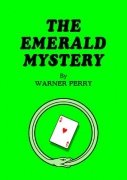 Come on guys - be up front with your descriptions. This trick requires a 13 card setup from a second deck and a 13 card setup from the deck to be used. Way more involved than the description implies. This is why I always hesitate to buy written tricks like this. Also, the trick is only 8 pages, the rest is advertising.
Come on guys - be up front with your descriptions. This trick requires a 13 card setup from a second deck and a 13 card setup from the deck to be used. Way more involved than the description implies. This is why I always hesitate to buy written tricks like this. Also, the trick is only 8 pages, the rest is advertising.
Numbered
Overall customer rating: ★★★★★reviewed by Chris Fogarty (confirmed purchase)
Rating: ★★★★★ (Date Added: Wednesday 15 July, 2020)
 The principle is one of those tools that because of its simplicity it can be applied in very creative ways to many different things which allows you to focus on the patter, comedy, intensity, (whatever your style) rather than worrying about if the trick is going to impress. The effect is impressive by itself. Write some good jokes to go with it and viola! A solid routine for an opener, mid show, even a closer if you build it up the right way.
The principle is one of those tools that because of its simplicity it can be applied in very creative ways to many different things which allows you to focus on the patter, comedy, intensity, (whatever your style) rather than worrying about if the trick is going to impress. The effect is impressive by itself. Write some good jokes to go with it and viola! A solid routine for an opener, mid show, even a closer if you build it up the right way.
$8 well worth it.
Thank you, Cameron Francis
Numbered
Overall customer rating: ★★★★★reviewed by Craig Daniel (confirmed purchase)
Rating: ★★★★★ (Date Added: Wednesday 15 July, 2020)
 Brilliant! Brilliant! Brilliant! Easy, simple, effective, direct! ... Did I mention I thought it was BRILLIANT? I have bought less impressive tricks for much more. Buy it!
Brilliant! Brilliant! Brilliant! Easy, simple, effective, direct! ... Did I mention I thought it was BRILLIANT? I have bought less impressive tricks for much more. Buy it!
Bammo Aces
Overall customer rating: ★★★★★reviewed by Yuki Kadoya (confirmed purchase)
Rating: ★★★★★ (Date Added: Saturday 11 July, 2020)
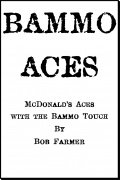 I really love both routines! Well-constructed and looks really wonderful. And I also love the 4 aces production with HALO Cut and Pirandello False Cut. Deceptive and easy! I believe this manuscript is a bargain!
I really love both routines! Well-constructed and looks really wonderful. And I also love the 4 aces production with HALO Cut and Pirandello False Cut. Deceptive and easy! I believe this manuscript is a bargain!
The Bammo Tarodiction Toolbox
Overall customer rating: ★★★★★reviewed by Michael Close
Rating: ★★★★★ (Date Added: Friday 10 July, 2020)
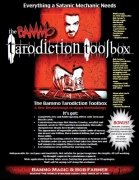 Don’t let Bob Farmer’s ad for The Bammo Tarodiction Toolbox deter you from purchasing it. The only things “satanic” about the contents of TBBT are the devilishly clever ideas contained therein. In his Introduction to the manuscript, Bob sums up the contents this way: “There are three parts to this manuscript. In the first part, I explain a system for sorting groups of cards that does not require any understanding of the math involved – follow the directions and it just works. In the second section, for those who are interested, I have explained the underlying science: understanding this section will allow you to come up with your own effects. This section also includes the fastest method available for stacking decks into any order. The third section is a bonus: the long unavailable Tsunami manuscript, along with some related material. Its gambling theme fits in here nicely.”
Don’t let Bob Farmer’s ad for The Bammo Tarodiction Toolbox deter you from purchasing it. The only things “satanic” about the contents of TBBT are the devilishly clever ideas contained therein. In his Introduction to the manuscript, Bob sums up the contents this way: “There are three parts to this manuscript. In the first part, I explain a system for sorting groups of cards that does not require any understanding of the math involved – follow the directions and it just works. In the second section, for those who are interested, I have explained the underlying science: understanding this section will allow you to come up with your own effects. This section also includes the fastest method available for stacking decks into any order. The third section is a bonus: the long unavailable Tsunami manuscript, along with some related material. Its gambling theme fits in here nicely.”
I’ll elaborate on what Bob said in just a moment, but first I need to correct an error in the above paragraph: the claim that: “This section also includes the fastest method available for stacking decks into any order.” It turns out that after the manuscript was published, Bob discovered an even faster way to sort a deck into a prearranged order. This information is included in an Addendum that comes with The Bammo Tarodiction Toolbox. Using this updated method, I was able to go from a shuffled deck to Aronson-stack order in two minutes flat. (And this was on my first attempt. With practice and familiarity, I’m sure I could shave thirty seconds off that.)
So here’s what’s going on: Bob has devised a method of quickly sorting cards into a previously prearranged order. He has also devised a way to convey this procedural information to you (the performer) in a way that is not apparent to your spectators. He has also devised several good tricks to demonstrate the power of this system. The first of these involves two fifteen-card piles. The spectator shuffles both piles and chooses one. He then mirrors the magician’s actions as he deals out the cards three times. The spectator’s cards end up in a random order; the magician has three, sequentially ordered, exceptional poker hands (at the odds of over a trillion to one against). This basic effect is then expanded to include an astonishing prediction. Variations with ESP cards and a Tarot deck follow.
The second section of The Bammo Tarodiction Toolbox covers the math behind the sorting procedure. By understanding how the sort works, you can apply the procedure to any result you want to accomplish. Those of you who do memdeck work will appreciate that Bob has worked out the sorting procedure for the Aronson stack, the Tamariz stack, and Si Stebbins order. Having this information coded on the cards will allow you to reset your stack quickly (see my comment above).
The third section of The Bammo Tarodiction Toolbox is a reprint of one of Bob’s greatest effects, Tsunami. This trick was universally praised when it was released in the late 1980s, and rightly so. It is a remarkable demonstration of mind reading with a poker-related surprise kicker. As is the case with every effect he releases, Bob has worked out every detail, giving you variations to fit every performing situation. I learned and often performed the impromptu version of Tsunami when it first came out. I had forgotten how great the original method (using a stacked deck) was. This trick is worth the price of admission all by itself.
You should know that you’ll have to do some prep work before you can perform any of these effects; part of this prep work involves tracking down the necessary “tools.” Bob gives complete details on what supplies you’ll need and where to purchase them. None of the effects in the manuscript requires any sleight-of-hand ability.
If you do memdeck work, The Bammo Tarodiction Toolbox is a must-have. Fans of Bob’s previous efforts and those who enjoy ingenious, semi-automatic card effects will also want to pick this up. But for me, the main selling point of The Bammo Tarodiction Toolbox is that it is only the tip of the iceberg of what is possible using the sorting technique explained. I have had several long conversations with Bob about ways to utilize his discovery and further developments I’d like to see implemented, and he is enthusiastic about pursuing those ideas.
Bob has not stopped thinking about the principle explained in TBBT and has already released four addenda that contain more effects and ideas. Unless he plans to release a second edition, I predict that TBBT will be the first manuscript in the history magic to have more pages of addenda than pages in the original text.
Trust me; you want to get on the TBBT train right now. The ideas explained are as clever as anything I’ve seen lately. You’ll fool everybody, including yourself.
The Bammo Tarodiction Toolbox
Overall customer rating: ★★★★★reviewed by Rolando Santos
Rating: ★★★★★ (Date Added: Friday 10 July, 2020)
 Review from Linking Ring, March 2018:
Review from Linking Ring, March 2018:
After reading The Bammo Tarodiction Toolbox, I am convinced that former Magic Magazine columnist Bob Farmer has a math degree hidden somewhere in his wall, even though he says he flunked math in school. Less than a year after publishing the exhaustively researched Bammo Ten Card Deal Dossier, Farmer has put out another brilliant work that delves into a mathematical card sorting system seldom used in magic. With the Tarodiction Tool Box, you can secretly arrange cards in front of spectators and stack cards in Tamariz, Aronson, and Si Stebbins order in less than two minutes. It works with a specific tarot deck or any regular deck once you code it. The system is easy to see and understand.
Farmer painstakingly thought through the math so we don’t have to, and includes an entire section for math mavens who are interested, along with fifteen effects. However, you don’t have to understand the math to do the magic. The effects all include some counting, but the plots Farmer includes are structured so it doesn’t feel like it.
The manuscript also includes a hard to find, gambling routine called “Tsunami.” According to Farmer, “Tsunami” is “Variations of a single effect combined for a full performance. A card is selected and located, but there is gambling, mentalism, and some hustles along the way.” You bet the spectator one hundred dollars that you can discover his mentally selected card. Initially you lose, but eventually, you are able to win all the money back.
Bammo Tarodiction Toolbox also has one of the few excellent bizarre magic presentations I have seen written up in a general magic booklet. The premise for that trick is the prediction that famous occultist Aleister Crowley wrote the night he died is finally going to be explained using tarot cards.
Tarodiction Toolbox requires more than a little preparation. Most of what you need can be found in high-end art supply stores or online at Amazon. Don’t be put off by the prep work; the deck will last for years once you create it. Don’t let the math scare you off, either. Don’t worry about the why just follow the method laid out. Serious card workers and the math experts of the magic world will have a field day with the concepts. For the rest of us, this is something we can use to fool our fellow magicians as well as our audiences.
Highly recommended.
The Bammo Tarodiction Toolbox
Overall customer rating: ★★★★★reviewed by Jon Lovick
Rating: ★★★★★ (Date Added: Friday 10 July, 2020)
 Review from Genii:
Review from Genii:
Bob Farmer is one of those singular figures in the world of magic, whose brain doesn’t work like anyone else’s. A lawyer by trade, he is not a performer, but is a very interesting creator. He’s been marketing and publishing his unique creations for decades (always accompanied by amusing and confusing ad campaigns). Some of his creations that you might be familiar with include “Headhunter,” “Mutanz,” and “Deja VooDoo.” You likely know him as a long-time columnist in MAGIC magazine and the author of The Bammo Ten Card Deal Dossier.
What has Farmer unleashed on the magic world this time? In The Bammo Tarodiction Toolbox Farmer explores a mathematical system for sorting cards and he has found entertaining ways to exploit this system. The system relies on a ternary (or trinary) number system. What is that you ask? You’re familiar with binary systems, surely; think of ternary systems as the same thing, except there are three digits, instead of two. The second section of the book explains the mathematics involved, but the good news is you don’t need to understand the math in order to do the tricks. You merely need to follow the necessary procedures.
What sort of procedures? Well… (I know this is going to sound dull, but trust me, the tricks that it makes possible are fun, entertaining, and deceptive.) Imagine you have a deck of cards, each of which is marked with (specific, not random) variations of “center, right, left.” If you were to thoroughly shuffle the deck and then deal through the cards, placing each into the pile indicated by the first word, then gather up the cards, then dealing each into the pile indicated by the second word, then gather them up and dealing and gathering a third time, the entire deck would be in a specific order, such as new deck order or Mnemonica. Obviously, dealing through fifty-two cards three times is not something an audience will want to sit through, but the principle can be exploited for smaller groups of cards, and all the tricks in this book use fifteen cards or fewer, keeping dealing time to a minimum.
The challenge with using this system as a method is justifying the dealing and/or making it entertaining. Well, that’s where having a brain like Farmer’s comes in handy; he is nothing if not entertaining.
The tricks include one where you teach a spectator how to cheat at cards, a couple gambling-themed tricks that are reminiscent of “Sympathetic Cards,” some interesting effects involving ESP cards, and a wonderful, elaborate routine using Tarot cards. The manuscript I was originally given for review was 99 pages long, but in the short time since, Farmer has come up with so many new effects that there are addenda, and the book now comes in at 146 pages. The addenda include some really interesting new tricks, ideas, and variations, including a fantastic routine, inspired by “The Tantalizer,” which has long been one of my favorite tricks.
Also included in the manuscript is a reprint of “Tsunami,” a long unavailable gambling manuscript that was, as Farmer says, “universally praised by those who praise universally.” I remember Michael Weber frying me with this at a magic convention many years ago. This is welcome addition to the manuscript, an underrated trick, and I’m glad to finally have a copy of it.
The ternary principle explained here is very interesting and Farmer explains many variations. I’m sure it will continue to inspire a lot of new applications. Serious card men (and math nerds) are going to have fun with this Toolbox.
Deckless Divination
Overall customer rating: ★★★★★reviewed by Karsten Meyerhoff (confirmed purchase)
Rating: ★★★★★ (Date Added: Thursday 09 July, 2020)
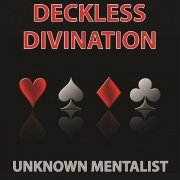 First of all, it needs to be said that all the claims made (no stooges, no peeks, ...) are true. Well, the playing card is not entirely freely thought of, but that doesn't take away too much. Other than that, the effect really plays out the way it is described, it is self-working and at 6$ - and even more at 3$, which is the special intro price I paid - you can't go wrong. You get an effect that requires nothing but a double-blank card - business card or otherwise - and you get an effect that should play very well.
First of all, it needs to be said that all the claims made (no stooges, no peeks, ...) are true. Well, the playing card is not entirely freely thought of, but that doesn't take away too much. Other than that, the effect really plays out the way it is described, it is self-working and at 6$ - and even more at 3$, which is the special intro price I paid - you can't go wrong. You get an effect that requires nothing but a double-blank card - business card or otherwise - and you get an effect that should play very well.
There is one thing, though, that I think needs to be mentioned: The way the effect is described, it only works in the English language. If you want to adapt it to another language - German in my case - that is certainly possible, but needs some tweaking, tweaking that some crossword-solving-help-websites (if that is a name at all ...) can help you with. And while you are at it, fiddling around with words, you discover that there are a lot of other possibilities for word-play - so, that may even be an advantage ...
Deckless Divination
Overall customer rating: ★★★★★reviewed by Craig Daniel (confirmed purchase)
Rating: ★★★★★ (Date Added: Wednesday 08 July, 2020)
 Simple, straightforward, easy to do with a nice effect on the spectator. Well worth it. Also, a possible use for the new Tyvek Himber Envelope if you choose to head that route.
Simple, straightforward, easy to do with a nice effect on the spectator. Well worth it. Also, a possible use for the new Tyvek Himber Envelope if you choose to head that route.
Gaukelwerk with Cards
Overall customer rating: ★★★★★reviewed by Tony Bianco (confirmed purchase)
Rating: ★★★★★ (Date Added: Monday 06 July, 2020)
 I have only read the first chapter so far and already I would say get this. Worth much more than the asking price. If you always wanted to learn how to clock a deck, this is the book for you. Get this and you won't be disappointed. Like I said I have only read the first chapter and I would recommend this highly. Can't wait to read the rest of what's inside.
I have only read the first chapter so far and already I would say get this. Worth much more than the asking price. If you always wanted to learn how to clock a deck, this is the book for you. Get this and you won't be disappointed. Like I said I have only read the first chapter and I would recommend this highly. Can't wait to read the rest of what's inside.
The True Secret of Mind Reading as Performed by the Zancigs
Overall customer rating: ★★★★★reviewed by Giovanni Iuliani (confirmed purchase)
Rating: ★★★★★ (Date Added: Friday 03 July, 2020)
 The system is based on knowing your A-B-C. Lacking is the phraseology that supports each cue. As an example, I don't think that the person holding an item retrieved from a spectator, would say: "Here tell ..." Five dollars. There is a hint on page 13 concerning a nickel.
The system is based on knowing your A-B-C. Lacking is the phraseology that supports each cue. As an example, I don't think that the person holding an item retrieved from a spectator, would say: "Here tell ..." Five dollars. There is a hint on page 13 concerning a nickel.
Here, please, what is this? - Nickel.
This means that the one who asks the questions must compose a phrase in which he incorporates the secret word(s). Consequently, a complete transcript of a performance would reveal much more then just a basic code for communicating between two person.